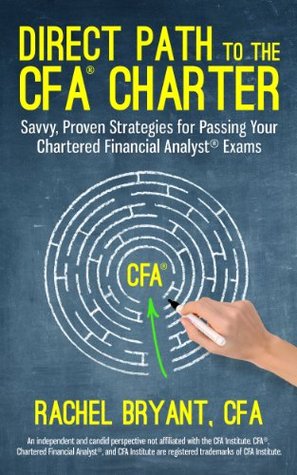More on this book
Kindle Notes & Highlights
Read between
October 28, 2017 - March 10, 2018
The heaviest Level I topic weights are Financial Reporting and Analysis (20 percent), Ethics (15 percent), Quantitative Methods (12 percent), and Fixed Income (12 percent). Approximately 60 percent of the Level I test covers these four topics, and it likely won’t deviate much from these estimations. When planning your study regimen, allocate extra time to these subjects. Maybe set aside two weeks for the big topics while, for a small topic like Alternative Investments, schedule a couple of days (I explain the details of my proven study plan in Chapter 8, “A Study Plan from Start to Finish”).
The tests contain two sessions—morning and afternoon—that can be easily completed on different days. Simply take the “morning” session early in the week, and take the “afternoon” session over the weekend. This plan averts fatigue—constantly taking six-hour behemoth exams is exhausting. Three-hour tests are far more digestible into your regular study regimen (and your life). Practice often with these half tests, mimicking morning and afternoon sessions without claiming your entire Saturday. It also keeps you in a test-taking mindset by practicing often.
Before you contemplate how much higher, like most other candidates, you have a date with humility. When beginning your practice test efforts, you’ll likely suffer the quintessential CFA-candidate experience of miserably failing your first attempt. It won’t be pretty. I scored a 44 percent on my first Level I practice test. Even after months of studying, a 44 percent!
Days of intense studying fly by, and soon, it’s time for your second practice test. You apply my recommended strategy of taking the “morning” session on a weekday and the “afternoon” session over the weekend. You study hard in between. The dedication pays off, and instead of the 45 to 50 percent from last time, you make a grade of 60 percent. That’s less scary. Breathe a sigh of relief and keep chugging along. By the third practice test, you may finally score a 70 percent.
Scoring in the 70th percentile is good; scoring in the 50th percentile is not.
For Level I, settle for nothing less than 80 percent on non-ranking paper exams by the end of your test prep. Level I practice tests aren’t unduly difficult and this grade is attainable. An 80 percent won’t happen right away. Scores this high likely won’t occur until at least your fourth attempt, and you may have to add a fifth practice exam to clinch an 80 percent score. The studying days between each test continually lift your performance so that you eventually get there. You’ll be amazed at how much you improve over time.
Aim for 75 percent on your final Level II practice tests; it’s only a five percent difference from 80 percent, but it will seem a world apart when you are taking Level II practice exams.
For Level I, complete approximately 75 practice questions for a typical study session. Many of these will be quick, one- or two-line questions, so the large volume isn’t as overwhelming as it sounds. By answering plenty of practice questions, you have a high likelihood of testing yourself on all of the major concepts that were presented throughout the study session.


